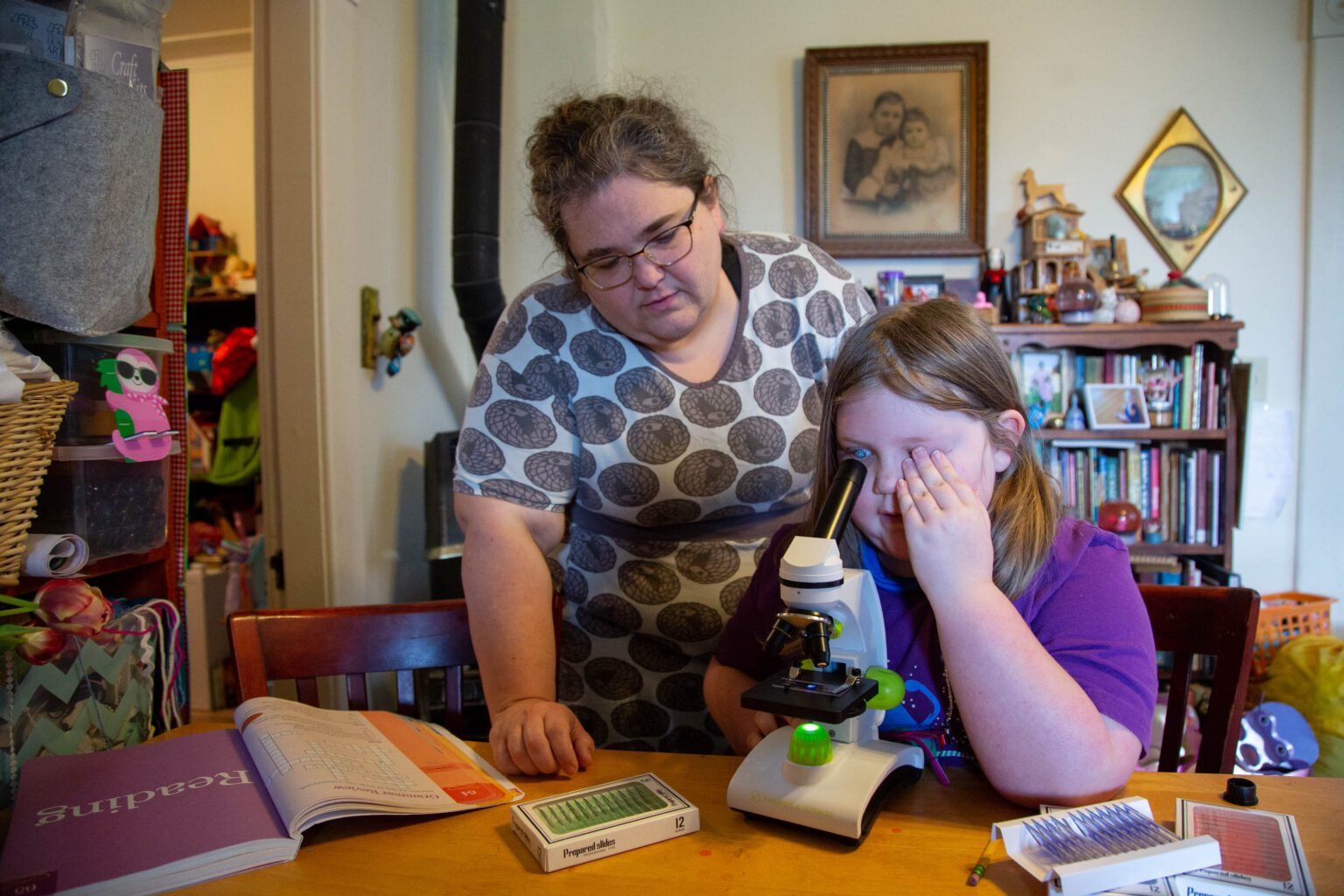BLAINE — With the pandemic changing education, blurring lines between public and home school, many Whatcom County families have made the decision to keep educating their children from home.
Jenna Schrengohst had two children in the Blaine School District who were doing great prior to the pandemic. When they went online with the onset of COVID-19, she said her 10-year-old daughter, Betty, thrived because she liked working at her own pace and doing extra projects. Her younger child, Coramina, has autism, and she said she was concerned about how she would do returning.
“I was really worried about the stress she’d be under with the extra social rules related to the pandemic,” Schrengohst said.

She said she was disappointed that the district didn’t continue the online learning option. The family plans to keep going with the home-based instruction for now, but they are open to returning to the public school system in the future.
In 2019, approximately 21,000 children ages 8 to 18 were home-schooled in Washington state, according to the Washington Homeschool Organization (WHO). By October 2020, that number jumped to 40,000 and has since dipped back down to 32,000 in October 2021. Families are not required to declare that children under the age of 8 are receiving home-based education.
“A lot of parents aren’t going to go back.” — Meagan McGovern, parent of home-schooled children
Meagan McGovern, a parent who has home-schooled her four children for more than a decade, said she’s seen a significant jump in local interest in home-based instruction. She helps lead the Home-schoolers of Whatcom County Facebook group, and membership has grown from 1,200 to 2,000 since the start of the pandemic in 2020.
In the past, McGovern said parents typically chose to home-school their kids for religious reasons. In more recent years, families have made the decision because they believe their kids learn better in a home environment, or because it suits the family’s lifestyle. Now with the pandemic, some parents are doing it to protect their kids from COVID-19 exposure while others do it to avoid mask mandates and other new guidelines.
No matter the reason, more families have made the switch.
“A lot of parents aren’t going to go back,” McGovern said.
Some families have also opted to use “pods” or micro-schools to educate their children outside of the public school system. Pods rose in popularity during the start of the pandemic as a way for students to be educated in small groups outside the public school system. Because this is a mostly new phenomenon, most are not funded or registered with the state, so they are not included in state data on home-schooling and enrollment, WHO advocacy chair Jen Garrison Stuber said.
In Washington, the state provides funding based on enrollment. In 2019, the state spent an average of $11,500 per student.
“Enrollment is key to school funding, and a big change in enrollment would certainly have an impact on the district’s budget,” Bellingham Public Schools spokesperson Dana Smith said.
The district has seen a 6.8% drop in enrollment from 12,052 in the 2019–2020 school year to 11,233 students as of January 2022, according to Bellingham Public Schools.
Lynden School District has dropped by approximately 3.9%, Blaine School District by 6.4%, Mount Baker School District by 8.9%, Nooksack Valley School District by 5.2%, Ferndale School District by 7.8% and Meridian School District by 1.5%, according to data from the Washington Office of the Superintendent of Public Instruction.
Many school districts in the area also have opportunities for students to join Alternative Learning Experiences (ALEs), which provides onsite, part-time classes in STEM, language, fine arts and other specialized subjects for students who receive primarily home-based instruction.
Students are enrolled in the school district, so the district still receives funding while maintaining home-based instruction. Bellingham Public Schools’ Family Partnership Program also saw growth from 223 students in 2019, to 595 in 2020 and back down to 423 in 2021.



